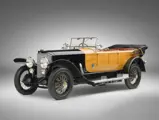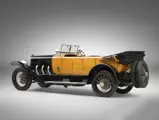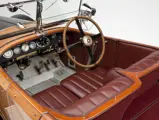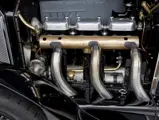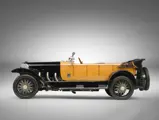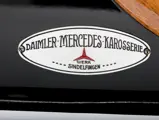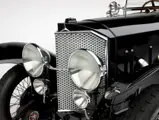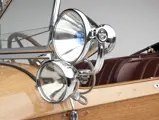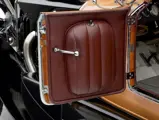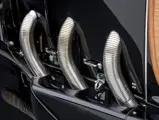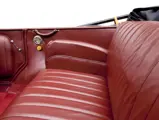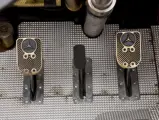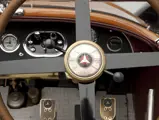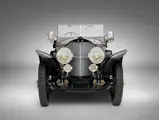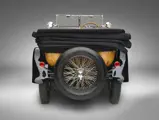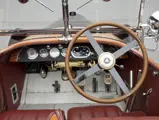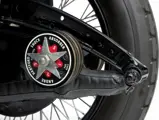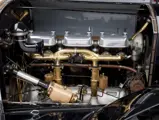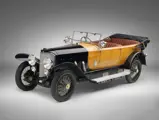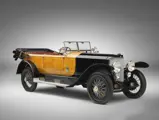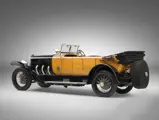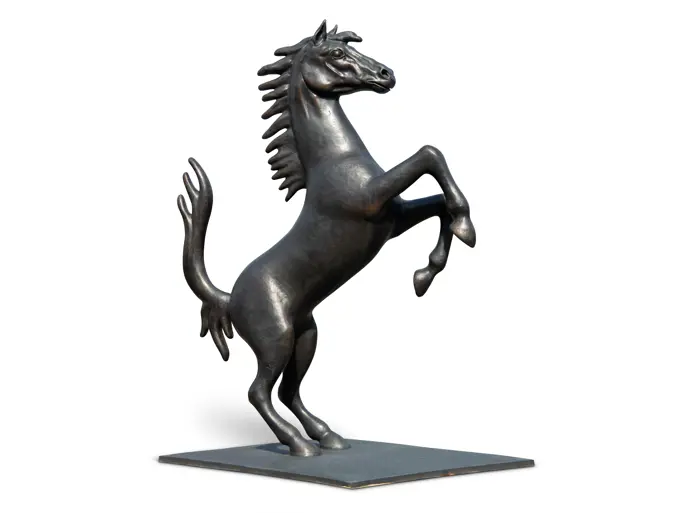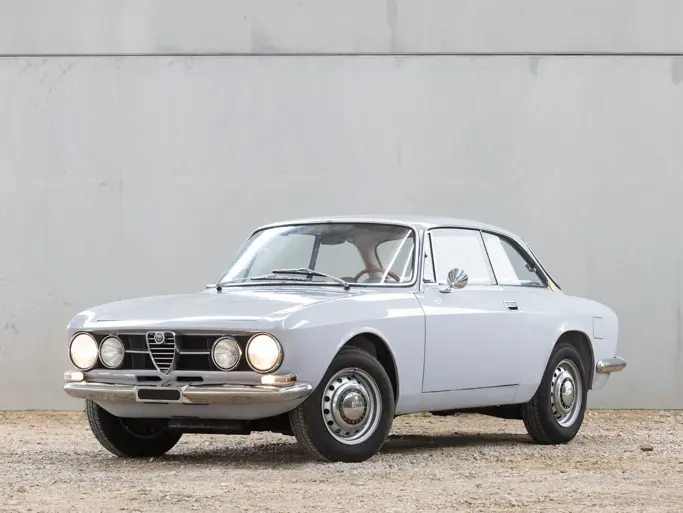Monterey 2011
1924 Mercedes 28/95 Sport Phaeton by Sindelfingen
{{lr.item.text}}
$1,017,500 USD | Sold
 | Monterey, California
| Monterey, California
{{internetCurrentBid}}
{{internetTimeLeft}}

90 hp, 7,280 cc SOHC inline six-cylinder engine, four-speed manual transmission, live axle suspension with semi-elliptic leaf springs, and four-wheel mechanical drum brakes. Wheelbase: 98.4"
- An important Mercedes model; one of only a handful in existence
- Restoration completed by John Griffith and Gene Smyers during the early 1990s
- Owned by some of the earliest and most noted automotive collectors in the U.S.
- Handsome in presentation, highly equipped, abundant power for touring
One of the last of the magnificent Mercedes models introduced before the merger between Daimler and Benz, the 28/95 stands as one of the most powerful and sporting of all post-WWI automobiles and the precursor to the immortal S, SS, SSK and SSKL models of the late 1920s. A short-chassis 28/95 Mercedes was driven by Max Sailer to win the Coppa Florio and to second place in the concurrent Targa Florio, conclusively establishing the model’s sporting credentials.
Powered by an inline six-cylinder engine tracing its design heritage to Daimler’s DF80 aircraft engine of WWI, the 28/95 initiated the transition from the somewhat rudimentary automobiles of the prewar period to far more refined and sophisticated design statements. In particular, the exposed valve gear of the DF80, with its lubricant splatter and noisy valvetrain, was replaced with a fully enclosed, shaft-and-bevel gear driven camshaft and valves tucked neatly within cast-aluminum housings for each of the three pairs of cylinder castings joined to a large aluminum crankcase. Mercedes’ engineers also showed an unusual (for the time) appreciation for free breathing, giving the normally aspirated 28/95 two carburetors and individual intake passages to each cylinder.
The chassis was typical of the period but robustly constructed, so Mercedes owners could use their 28/95s in any possible situation and with a wide selection of coachwork. The drive to the rear axle was through a shaft, while semi-elliptic leaf springs and friction dampers controlled the live front and rear axles. While the earliest 28/95s had only rear-wheel brakes, Mercedes was quick to realize that the size and performance of these magnificent automobiles – plus the 28/95’s capacity for passengers and luggage – warranted the additional stopping power of four-wheel brakes, which were soon added to the 28/95’s specifications. Whether on colonial roads, European highways or urban boulevards, the Mercedes 28/95 was a sophisticated, fast, robust and powerful automobile of the finest quality, and its expense made it accessible only to the top tiers of society, who specified individual coachwork to suit their specific needs.
Even among the high-quality bespoke coachwork fitted to the Mercedes 28/95 chassis, the wonderful wooden Sport Phaeton body on chassis 27003 stands out. Constructed at Mercedes’ own coachworks at Sindelfingen, where the finest artisans, technicians and materials were employed to complement the mechanical excellence of the Mercedes chassis, the quality and distinctive appearance of this car’s coachwork makes a dramatic statement. Its flair complements the design of Mercedes’ sweeping “clamshell” front fenders and the myriad accoutrements that equip this Mercedes for just about any journey.
Previous records indicate that the first owner was in the UK, but its subsequent history is unknown until it joined the pioneering auto collection of Kirkland Gibson in Rhode Island. Both Gibson and his collecting colleague and partner George Waterman at one time owned Mercedes 28/95s. Gibson and Waterman could, and in fact did, own just about anything they wanted in the late 1930s and 1940s, when these classics were simply older cars in barns and carriage houses of New England. The fact that both of them chose to own Mercedes 28/95s is abundant evidence of the quality, style and innate appeal of these pieces of German automotive artistry.
From Gibson’s collection, 27003 was acquired by California collector Ben Moser, who took the first steps toward a restoration of the largely complete and original 28/95 Sport Phaeton. While still in the early stages of restoration, it was acquired by Edwin C. “Ted” Jameson, Jr., under whom John Griffith and Gene Smyers completed the work during the early 1990s.
While extensive, the restoration was aided by the remarkably preserved original wooden bodywork and metal body components, as evidenced by pre-restoration photos of the car. While the wooden coachwork was stripped and refinished, little wood replacement was necessary despite its age of some 70 years. The interior was re-trimmed and reupholstered by Vaughans of Greer, South Carolina. The comprehensive lighting, consisting of Bosch head and auxiliary lights, dual spotlights mounted on the windshield frame and cowl lights, needed only careful rewiring and refinishing. The wire wheels are fitted with stainless-steel spokes and black rims matching the car’s fenders and frame covers, while the maroon hood was refinished to a very high standard. All brightwork was re-plated. Despite the age of the restoration, the impression created by this Sport Phaeton remains immediate and compelling. It is a spectacular and well maintained motor car of the highest standards of construction, restoration, fit and finish.
Since completion, it has been sparingly used both by Ted Jameson and by the present owners, to whose extensive collection of fine antique and classic automobiles it was added in 2003. Owned by some of the most discerning collectors for over 60 years, it would be an important addition to any fine collection and one of only a handful known to exist with this coachwork. It is also complete with a spare set of hubcaps and fully equipped with weather equipment including a convertible top and top boot, plus front and rear tonneau covers. It is confirmed to be in proper running and driving order, and its “100 real horsepower,” according to restorer Gene Smyers, will ensure drivability on modern roads and provide a rewarding and exciting driving experience. Its offering at auction will also provide the new owner with an unparalleled opportunity to follow in the footsteps of some of the most noted automobile collectors by becoming its next and very fortunate caretaker.

